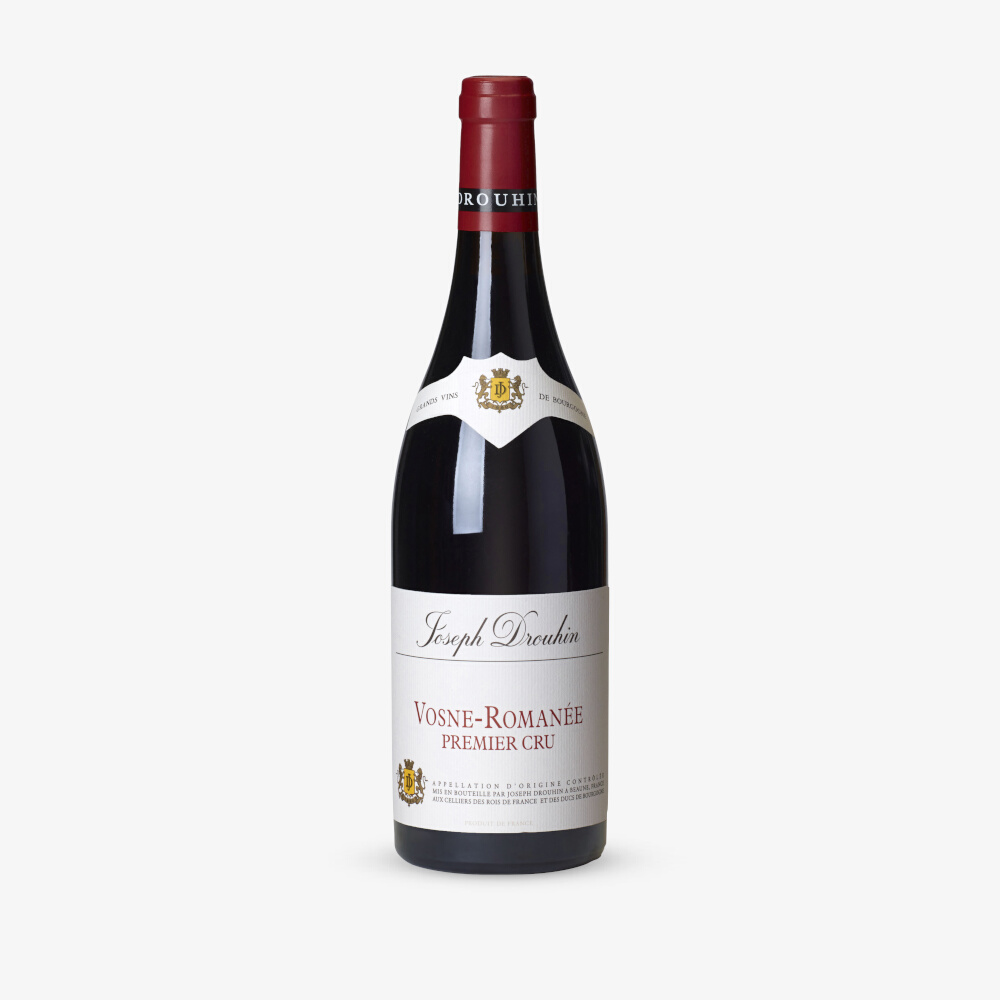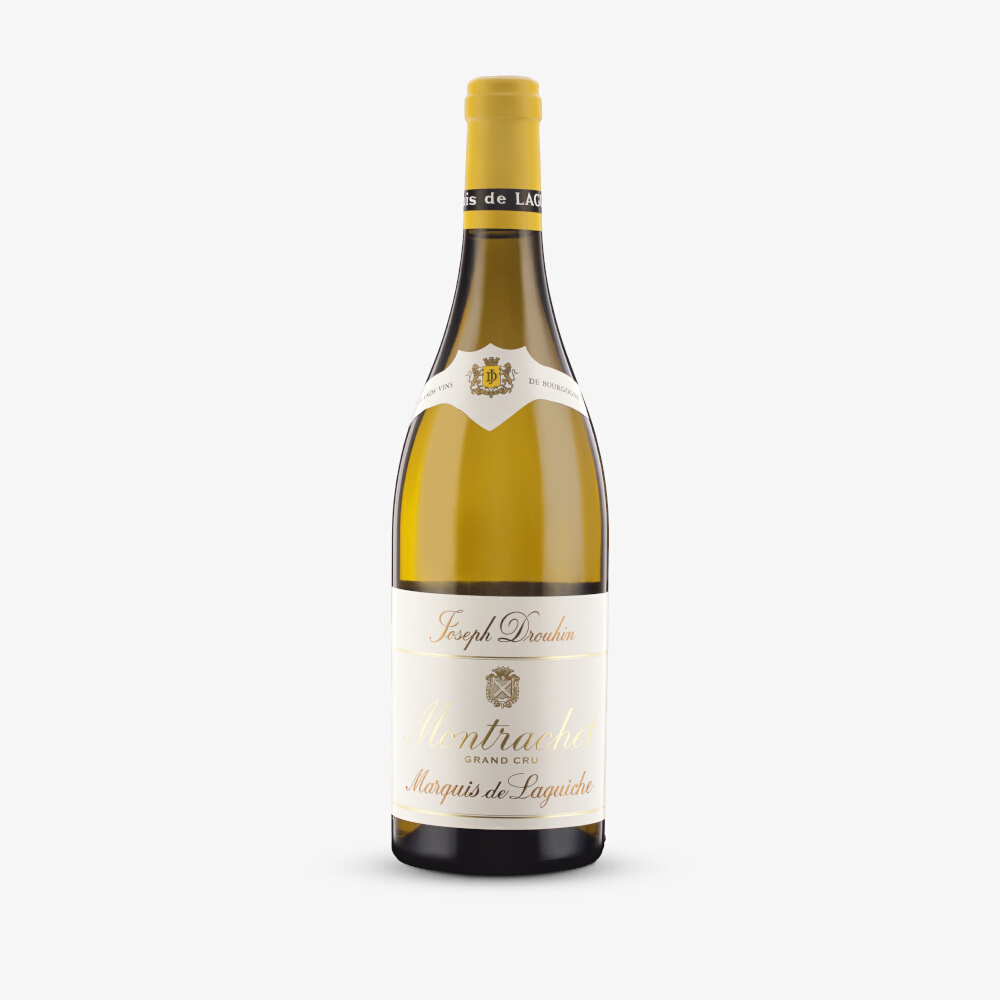
Joseph Drouhin
Joseph Drouhin are a family own Domaines and Negociant who command the greatest respect of all the big Burgundy houses. Their knowledge of the land combined with their attention to details in the vineyards as well as their gentle wine making style results in very fine Burgundy that reflect its origin. Little use of new oak, gentle extraction and whole bunch fermentation according to the year or the cuvee are whole part of their belief that good burgundy can't be made by firm hand of the winemaker. The crown jewels in the Drouhin portfolio are without doubt the Domaine Marquis de Laguiche, which has the largest percentage of land in Le Montrachet (30%) of all the owners, and the Domaine Drouhin-owned Clos des Mouches. Drouhin have had exclusive control over the former estate, from cultivation to distribution, since 1947, while Clos des Mouches is one of those rare breeds in Burgundy, a monopole. Originally planted with Pinot Noir, almost half the vineyard was replanted with Chardonnay in 1921 by Maurice Drouhin.
2017 Vintage
It was a fast and early start to year with bud-break in March. Warm April weather was punctured abruptly mid-month with a period of cold weather. Despite severe danger of frost, the Côte d’Or largely escaped thanks to a collective push to protect against it; a lesson learned from the prior year. Drouhin’s Chablis vineyards were affected, however, and have yielded a small but very healthy crop. Good weather continued and already by July hydric stress was a danger, narrowly avoided by some rain in the early part of the month. Hot, dry conditions continued thereafter, though, until mid August which brought with it more lenient temperatures. Harvest was early, starting in the Côte d’Or around the 30th August and in Chablis on the 5th September. Flowering had been good and overall vineyard health was excellent throughout the year, meaning this is the first “normal” crop for some years, except in Chablis. The grapes and wines are characterised by ripeness across all metrics; flavour profile, tannic structure, alcohol and acidity. As a result of the health and ripeness of the grapes, a higher percentage of whole cluster fermentation was employed than usual. The tannins melt seamlessly into the reds. For the whites acidities are not high but there is a sense of equilibrium and freshness nonetheless. The key for Drouhin was finding balance in the wines and not too much power. Both reds and whites are certainly ripe and flattering early but they show substance and character too. They are certainly not short on charm. A very attractive vintage here for both colours.
2018 Vintage
The Drouhin family is "rejoicing" in the 2018's, citing "good yields" and "remarkable sanitary conditions" as defining factors of the vintage. A wet winter and spring set the vintage up well, considering one of the sunniest and driest summers on record was to follow. Harvest began on the 29th August but the Drouhins noticed some of the vineyards were suffering a little from drought. Early September rains resolved this, and harvest continued as plants ripened their fruit. They had finished picking by 7th September. Although August's sun had burnt the malic acids, the whites did retain good levels of tartaric acids and this, coupled with the decision not to do any batonnage, has given the wines a tremendously fresh, aromatic fruit character to compliment the ripeness of the vintage. As stalks and berries were ripe and healthy, they employed a certain amount of whole-bunch fermentation for the Pinots (between 25% to 50%). Naturally rich in colour, alcohol and tannins the Drouhin team carried out gentle extractions for the reds, favouring pump overs instead of pigeage.
2019 Vintage
Veronique Drouhin terms 2019 “a very classic vintage, we all like it very much,” but getting there meant “we had to adapt for there have been some challenges throughout the season.” The main challenge was of course drought. This, and protracted flowering, meant yields are down between 10 and 25%. It could have been more were it not for some hard work and a little luck when frost had threatened around the 5th and 14th April. The drought’s impact was felt in July, when plants started to go into survival mode and take water from the berries. This concentrated the grapes, which turned out to be a positive as acidities were concentrated with the sugars. A little bit of rain arrived in August, replenished vines and ensured ripening could continue. Indeed by harvest time, on the 10th September in the Côte d’Or, grapes were fully ripe and extremely healthy. As Veronique noted, “the question was would the wine be too heavy or too flat or too flabby because of the heat and drought of the season – and I honestly don’t find this is the case,” explaining that the concentrated acidities helped the wines, but also emphasising that the lees were key, too. “The grapes were healthy and this meant healthy lees, so we could use these (during élevage) to keep the freshness in both the reds and whites. An impressive range of zesty, intense but really ripe whites, and beautifully sensual, expressive reds.
2021 Vintage
With such widely spread holdings, from Chablis to the Mâconais, the Drouhin team was a busy one in 2021. As elsewhere, the whites here were the hardest hit by the frost. Attentive vineyard work followed by careful sorting and then precise vinifications has meant that against the odds, Veronique Drouhin has produced a lovely, and surprisingly consistent range of wines. A touch more bâtonnage than usual, almost no whole bunch, but beyond that winemaking as normal here being light touch and respectful of each cuvée. The results are, in their own words, “in a very classic Burgundian style... harmonious, very elegant with beautiful aromatic precision (and) lower alcohol levels than in previous warmer vintages”.
2022 Vintage
An upbeat Veronique Drouhin greeted us to taste the 2022 vintage. “I think both we and the vines have learnt a lot in the recent years. This is actually perhaps the fourth warmest vintage Burgundy has experienced, after 1947, 2003 and 2020, but the wines have real freshness.” Quizzed on who had the easier ride, Veronique was clear: was definitely harder for the growers than for the winemakers. The intense rain in June meant some vineyards were hard to access, which made treating for oidium a challenge. “Then we had heat, rain and heat again. And then of course, not everywhere got rain, so when it came to harvest, the normal routine was out of the window. We had to be in the vines every day, walking the rows, to see when we had true ripeness. In the winery, apart from having to use a sorting table for the whites, which is rare, the winemaking was relatively straight forward. We call the vintage “generous and of quality” – which seems like a fair summation. Both colours seem equally good here in 2022 – an impressive feat given the sheer number of appellations the Drouhin team works with.
2023 Vintage
Drouhin’s extensive range of wines always provides a good overview of a given vintage across their multitude of appellations. As a dedicated Biodynamic operation, yields were on average 30% below the maximum in each appellation, further decreased by Philippe Drouhin’s propensity for green harvesting. “We call him the golden scissor” Christophe Thomas chuckled. Harvested first, the whites in general lean towards the richer end of the spectrum, with bold ripe fruit and plenty of mouthfeel, while the reds display a supple suaveness with plenty of fruit density. Drouhin fans will find lots to love here.








